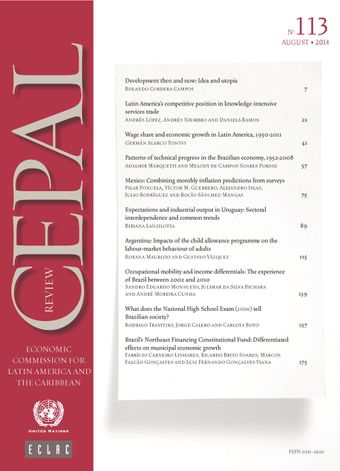-
What does the National High School Exam (ENEM) tell Brazilian society?
- Source: CEPAL Review, Volume 2014, Issue 113, Dec 2014, p. 157 - 174
- Spanish
-
- 31 Dec 2014
Abstract
This article assesses the limitations and potentials of the National High School Exam (enem) as an indicator of school effectiveness in Brazil, and considers the effects of introducing contextual variables. A multilevel regression analysis was performed on three levels (individual, school and state) using microdata on 17,359 schools from 2009 and 2010. Contextual factors made it possible to explain 79% of the difference between schools. The raw average and value-added (random effect at the school level) produced contrasting evaluations in 34% of cases; and the average was more stable (r = 0.8) than value-added (r = 0.5) in both years. Various shortcomings in the enem as an indicator of school effectiveness were identified. The results show that this league table reveals more about socioeconomic conditions than the schools’ own merit, in other words the value-added they are supposedly providing to the students.
© United Nations





